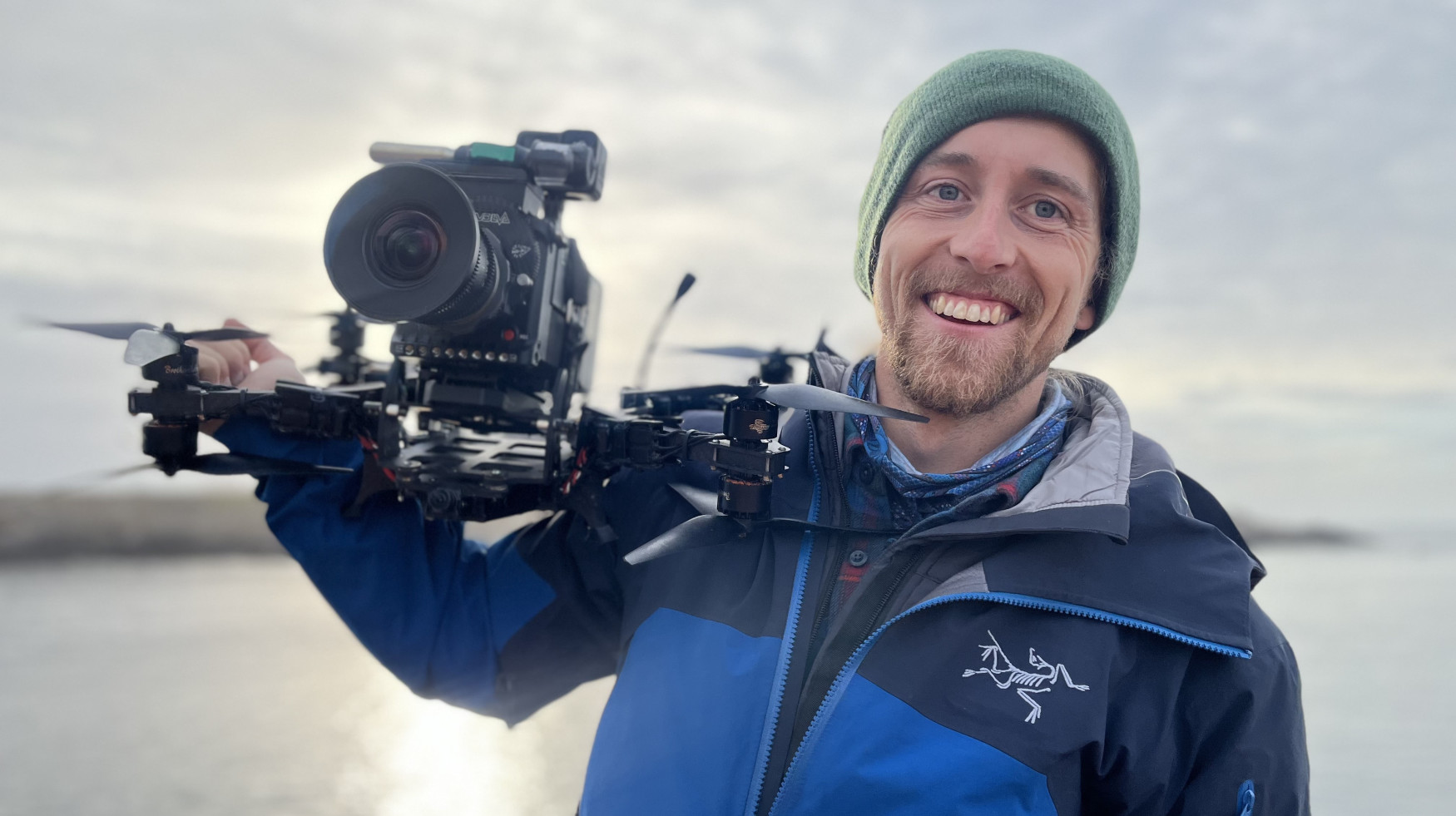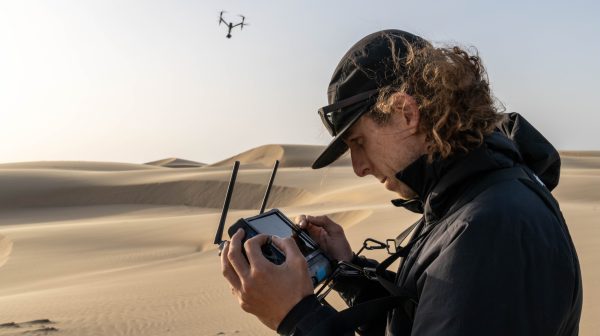
Alumni Q&A: Drone filming from Alaska to the Middle East
TRU alum Raphael Boudreault-Simard (Adventure Guide diploma ’14) is the owner of Flow Motion Aerials, an international aerial film company. His work has taken him around the globe, from Canada to the Middle East. While working on a project in Alaska, he used a weather delay as an opportunity to answer some questions about his career journey since graduating from TRU.
Can you tell us a little about your background, what inspired your move to BC and your choice to attend TRU?
I grew up in Quebec and was very fortunate to spend a lot of family time camping or going to summer camps. That certainly fostered my love for the outdoors, with a particular and slightly obsessive interest in water. It was not until my late teenage years that I started whitewater kayaking and from then on, my whole life carved out a new path.
After a season of raft guiding and sharing the love for rivers, I applied to the TRU Adventure Guide program and next thing I knew I was headed out West the next summer. It was certainly the best decision of my life!
Did you first get involved with flying drones as a hobby? If so, how soon did you realize you wanted to make a career out of aerial cinematography?
After a few glorious years of international river guiding and kayak instructing, I started having some serious shoulder stability and dislocation issues which kept me off the water. I had already been filming our kayaking adventures for a few years so figured going out and filming friends kayaking would still allow me to stay relatively close to the action even if I could not paddle, or so I thought.
After a long bushwack to the film spot, I was devastated to find out my shoulder was too sore to even hold a camera. Later in the evening, I was all mopey and complaining about my inability to even hold a camera and my good friend Michael casually told me: “If you can’t hold the camera yourself, just have a drone fly it instead!” Both he and I had no idea how powerful that line turned out to be.
Just a week later, I was already training on a small toy drone and I knew pretty quickly I wanted to make this a career.
There seems to be a level of precision and focus required in kayaking to expertly navigate whitewater rapids. Would you say a similarly high level of focus is needed to successfully pilot a drone in the extreme locations you frequent?
 That similarity was pretty much what I based my whole aerial cinematography career on when I started. In both whitewater kayaking and drone flying, there is teamwork, planning, scouting, risk assessment, visualization and when the time comes to make it all happen, flowstate.
That similarity was pretty much what I based my whole aerial cinematography career on when I started. In both whitewater kayaking and drone flying, there is teamwork, planning, scouting, risk assessment, visualization and when the time comes to make it all happen, flowstate.
From an outside perspective, both activities might look like it’s just a lot of winging it, but that could not be further from the truth. There is so much preparation involved, which requires understanding the environment we are working with and coming up with a solid plan.
The list of clients and partners you’ve worked with through Flow Motion Aerials is extensive and includes National Geographic, BBC, Netflix and Disney+, to name a few. Can you share a few memorable moments from projects you’ve worked on?
It’s so hard to pick specific moments out! There have been so many moments filled with deep gratitude and an overwhelming sense of wonder.
A few moments that come to mind would be flying down a giant avalanche in the Canadian Rockies, filming migrating flamingos in the Middle East, flying among jumping dolphins in Costa Rica and filming monkeys during a gorgeous sunrise in Indonesia.
Heck, even today is a memorable day. I’m doing this interview as our production co-ordinator Ella and I are stuck in a tiny fisherman’s cabin in the middle of Alaska due to violent weather preventing our final float plane flight from taking off.
Not only do we get to form tight bonds on each shoot with our colleagues, new and old, but we also get constantly parachuted into such different worlds. These glimpses of other cultures, places and ecosystems, as well as experiencing the kindness of people all across the globe, are truly gifts.
What specific skills or knowledge from your experience in TRU’s Adventure Studies program do you find most useful in your current role?
I often end up flying large and heavy drones in very challenging situations and having a solid background in risk management makes a world of difference. Knowing how accidents happen, understanding human factors and external factors that can lead to accidents, risk analyzing using consequences versus likelihood as well as risk prioritization and monitoring are all indispensable skills and knowledge to have during our operations.
You’ve been in the aerial cinematography industry for quite a while. Has the focus of projects you take on changed over time? Can you explain why?
It certainly has. I started in the sport scene and absolutely loved it. I was also curious to see how they were doing things in the big league, so I started doing some work in the feature film and TV series scene in Vancouver. That then brought me into the commercial scene, where the shoots are short but very intense, think GMC truck commercials.
It was during the COVID-19 pandemic that I started working on wildlife series and it was love at first sight. What convinced me was small and intimate film crews of four to five people, gorgeous remote locations, engaging access and logistics and, last but not least, a sense of doing good and important work for the planet. The wildlife filmmaking world now feels like home and I’m in it for the long run.
Can you tell us about any innovative techniques or approaches you employ in your drone filming that sets Flow Motion Aerials apart from other companies?
Something that sets us apart is our remote wilderness access abilities. Being able to be proficient deep in the mountains, on the ocean and on rivers has allowed us to film in locations inaccessible by most drone teams.
Another aspect of our work that sets us apart is our technical innovations. I absolutely love getting nerdy and creative with problem solving when it comes to using drones and cameras in obscure ways that can allow us to get previously impossible shots.
Do you have any exciting upcoming projects you want to tell us about?
We are currently working on a fascinating IMAX film on Pacific salmon and various cultures, species and ecosystems that depend on them. We are bringing a lot of new technology designed in-house to this film which is always very rewarding!
